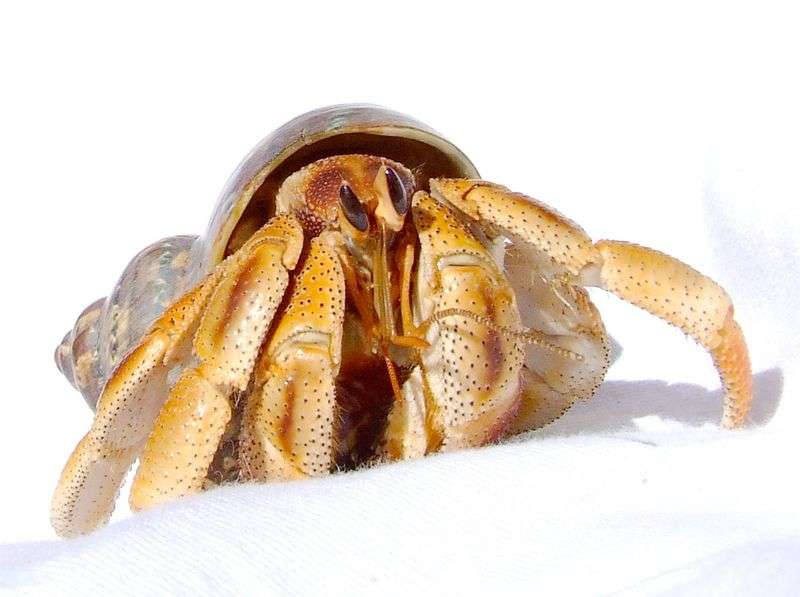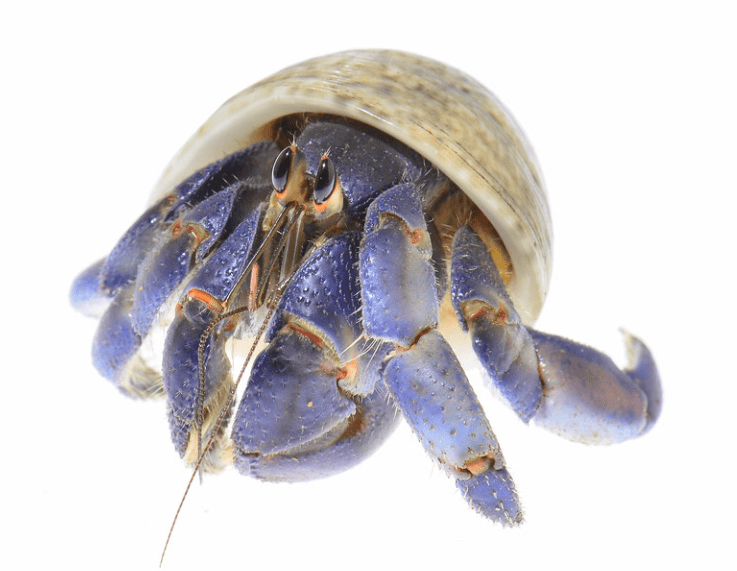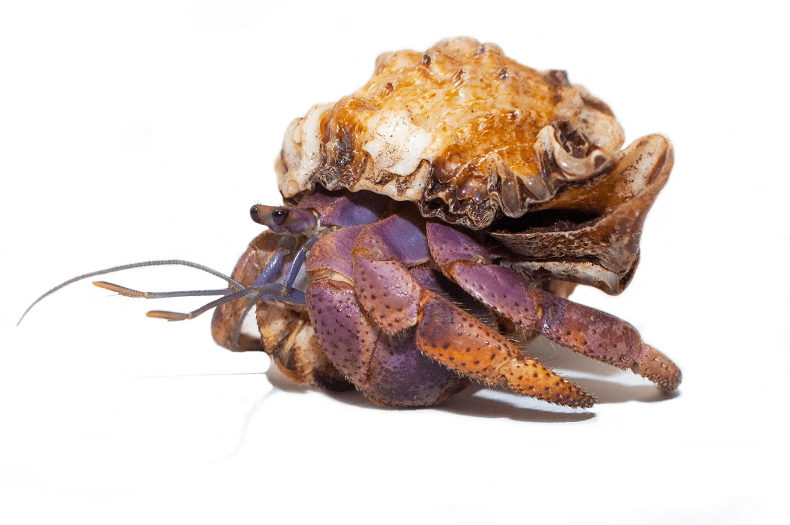
Description
The Komurasaki hermit crab Coenobita violascens is a land hermit crablike all land hermit crabs, it has a soft abdomen that it protects with a shell. It possesses a soft abdomen, just as all terrestrial hermit crabs, which is shielded by a shell. The land hermit crab must switch out its snail shell for a bigger one when it loses its skin and subsequently grows. Therefore, the land hermit crab’s terrarium should always contain a variety of different shaped and sized shells. We are happy to accept the Turbo and Tonna snail shells, but other shells are also feasible. To prevent the crayfish gills from being too dry, the shells must be intact.
One of the few crabs that actually produces noises and uses them for communication is the Komurasaki land hermit crab; it chirps quietly. The Komurasaki hermit crab changes colour, as suggested by its scientific name (violascens, which is Latin for “turning purple”). The colors of juveniles range from white to bright orange to orange-red or even brownish. With time, they turn from purple to pale blue. Frequently, the antennae are orange-red to red.
Distribution
From East Africa to the Indo-Pacific, Coenobita violascens can be found. Adults are typically located close to beaches, while juveniles frequently reside in mangrove swamps.
Behavior
The extremely calm Komurasaki land hermit crab exhibits distinctive social behavior and lives in groups. Therefore, it should be housed in a group of at least three to five animals rather than alone.

Keeping as Pet
The terrarium’s edges should be at least 80 cm long. Regardless of whether the animals are all the same size or not, this land hermit crab can socialize quite well with other land hermit crab species. Because land hermit crabs like to burrow, a terrarium should be filled with a permanently damp peat-sand mixture; coco humus is a good substitute. The substrate needs to be at least 8 to 10 cm high in order for Komurasaki hermits to completely dig in during molting.
For Komurasaki land hermit crabs, the humidity in the terrarium needs to be between 70 and 85%. With the use of a nebulizer or spraying once or twice daily (in the morning and evening), this constant high humidity can be attained. Temperatures between 18 and 26 degrees are ideal for land hermit crabs. A heat lamp typically suffices instead of a floor heating cable and, more importantly, divides the room’s temperature into various zones.
The Komurasaki land hermit crab consumes plants, but its motility and digging habits make it difficult to plant. You must transplant more frequently if you still want the terrarium to be green. Plants that are non-toxic are a necessity. Pet store or flower shop plants need to be pre-cultivated for two months. Before planting, please pre-cultivate outside the terrarium. Next, rinse the soil before adding the plants to the terrarium. The only way to guarantee that any potential pesticides don’t enter the terrarium is to do this.
Table





